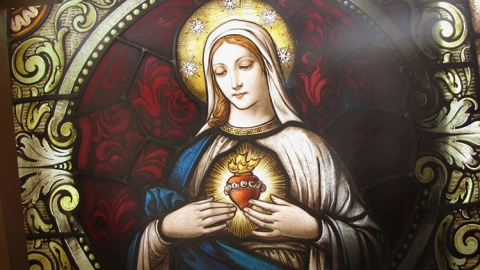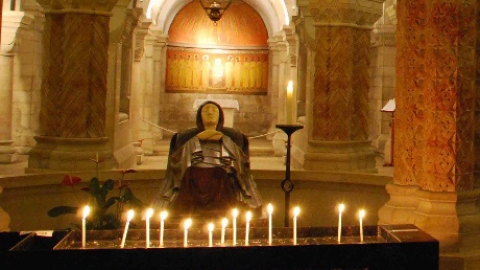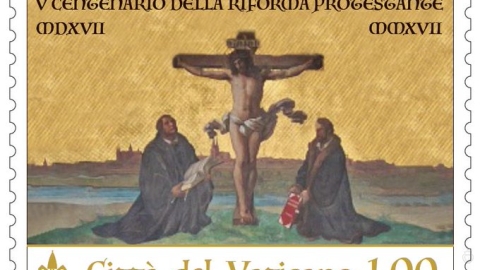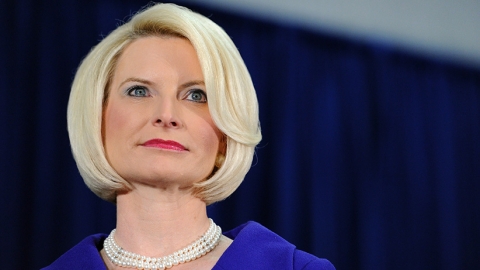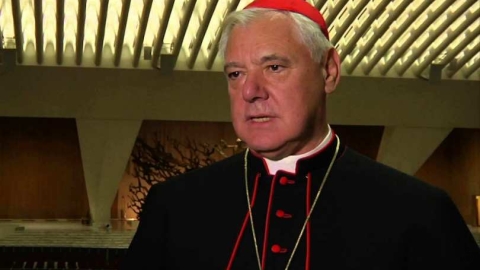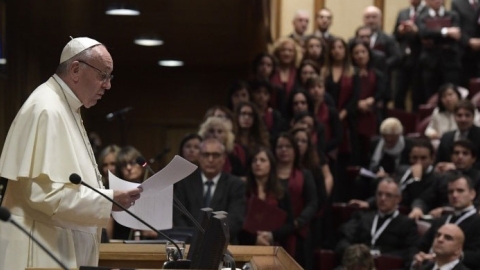Fr. Harber's Priestly Silver Anniversary Celebrated at St. Isidore’s, CO

St. Isidore's Church, Watkins, CO
The faithful of the SSPX church near Denver, CO, prepared a celebration for Fr. Harber. We provide some information on his priestly life.
In celebration of Fr. Michael Harber’s silver anniversary in the priesthood, on June 25 the faithful of St. Isidore’s Church in Denver, CO prepared a delicious banquet dinner after Mass with a festive cake. They then presented Father with a new breviary, cassock, and a hand-crafted pall. Fr. Jürgen Wegner, U.S. District Superior, was also present, and the topic of his Sunday sermon was the Sacred Heart.
Interview with Fr. Harber:
Fr. Harber, how did your vocation begin? What were you doing before you entered seminary?
From 1975-79 I went to Purdue University, where I earned a degree in mechanical engineering. After graduation, I worked at Eastman Kodak in Rochester for three years, then decided to go for more school. I took a leave of absence from work and earned a Master’s of Engineering from the University of Minnesota. During that time, I started to attend the Latin Mass; I saw priests who were acting more priestly than the ones I’d known from the new Mass, where they were not as devoted or focused. The Society of Saint Pius X priest in Minneapolis was Fr. Stephen DeLallo. After graduation I worked one more year at Eastman Kodak, and then I entered the seminary in Ridgefield in 1986.
Who were the other priests ordained in your class in 1992?
They were Frs. Kenneth Novak, Christopher Leith, David Nichols, and Stephen Stanich; there were three other priests who have since left the Society. Frs. Lawrence Novak and Peter Katzaroff were also with our class, and they were ordained shortly after we were. By 1992 the seminary had moved from Ridgefield, CT to Winona, MN.
What have been your parish assignments since your ordination?
The first four years I was the chaplain at the Sisters’ novitiate in Browerville, MN. In 1996 I was assigned to St. Mary’s Academy and College, where I remained for 10 years; I was the college chaplain, taught classes at the college and the academy, and helped with the parish. During that time, I was also pastor at the missions in Atlanta, GA, Virginia Beach, VA, and Wichita, KS. After St. Mary’s I was assigned to the Retreat Center in Los Gatos, CA, from where I also took care of the chapels in Sacramento, CA and Carson City, NV. Now that I am in Denver, I take care of the Minnesota missions in Minneapolis, Crookston, Sioux Falls, and Rapid City.
How long have you been a teacher at Society schools?
At the Sisters’ Novitiate I taught a few classes. At St. Mary’s College, I taught logic, cosmology, metaphysics, and ethics, and at the high school academy I taught Catholic social principles, liturgy, and the introduction to Scripture. In Sacramento I was the school principal, so I didn’t do much teaching there. I also teach at the academy here in St. Isidore’s.

Statue of Our Lady Help of Christians at St. Isidores
What especially memorable events do you recall in your time as a priest?
The transition of the seminary from Ridgefield to Winona in 1988 was memorable. It was a momentous event, and there was a bit of uncertainty in 1987-88 about what was going to happen for us seminarians. At the time, there were no seminarians in minor orders, and nobody was being tonsured because Archbishop Lefebvre had not travelled to the United States. All of us at the seminary then redoubled our prayers and we persevered. After the 1988 consecrations, we were relieved to have a bishop at the seminary.
What is the Society like today compared to when you were ordained?
It is more stable now, the weekends are not as strenuous; the workload was harder and more taxing back then. The U.S. seminary was rag-tag in the beginning, but it is not like that now. Today there are new problems and situations that we could not have anticipated back then – for example, things like mobile devices and widespread Internet access didn’t exist back then. I remember that back then, there was some hope that the new technologies could be used for education, but given fallen human nature, people end up using them too often in problematic ways.
What do you look forward to in your next 25 years?
Dealing with souls and helping them towards eternity. Priests take satisfaction in guiding souls – that is the work of the priest. As you grow in the priesthood, you have a better understanding of the essentials: the priest has the ability to touch souls a way no one else can – especially when you say Mass and hear confessions. A priest can do much more good than anyone else.
Source: sspx.org
